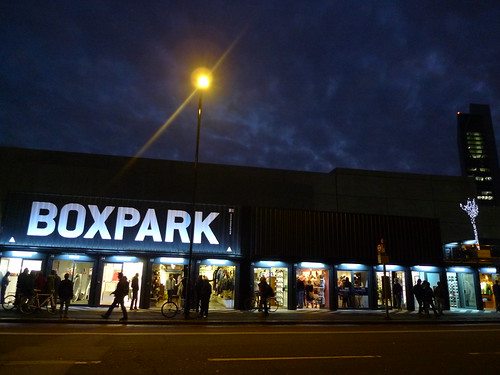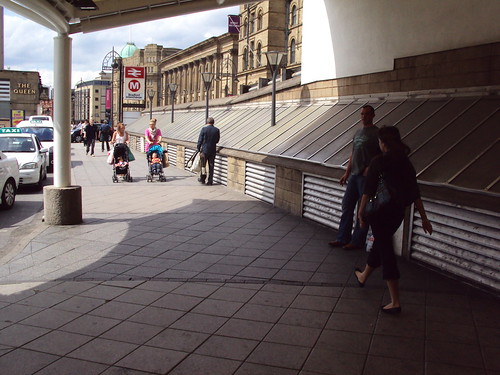
The city is forecast to have one of the fastest rising populations in the UK over the coming years, which presents a challenge as to how all these people are housed. Property developers are not wanting to take any risks in these turbulent times, so are opting for what seem to be 'safe bets', greenfield and low density houses with gardens and space for cars, a Castle for the Englishman - or Mondeo man.
The mechanisms for delivering regeneration have changed in recent years. Large scale regeneration projects led by the public sector do not fit with the Government's austerity policies, changes to the availability of finance mean that large scale city centre apartment development, driven by speculators, are a thing of the past. But the city still has empty buildings, people to house and needs to be a place where companies can start-up or want to move in to.
Community Led Development
Non for profit mutual societies can be set up to secure development. Brixton Green has issued shares to the community to secure the redevelopment of a council owned site close to the centre of Brixton. FC United have issued shares to the community to build their own stadium at Newton Heath.
The Creative Foundation is Folkestone is a charity that has acquired dis-used buildings in the town, leading to the establishment of a Creative Quarter.
Closer to Bradford, the LILAC eco housing scheme in Bramley is currently under development. This is a mutual home ownership society, where members have joined the co-operative and twenty homes are being built. LILAC has secured investment through loanstock, where investors can lend the co-operative funds over a fixed period. In Slaithwaite, the Green Valley Grocer (below) has thrived after the village's greengrocers was bought by the community, following a share issue and the shop provides an outlet for locally produced food, which would not have been possible without the community buying into the venture.

Bradford does have some co-operatives already, the 1 in 12 club and Brances and The Hive housing co-operatives.
But in the meantime...
The meantime phenomenon has certainly not missed out in Bradford, as demonstrated by Fabric's Pop Up Art Space, Urban Garden and Hand Made in Bradford. The Pop Up People report looked at how vacant spaces have been used temporarily, a theme that was explored in an earlier blogpost. With Bradford's number of empty shops, this needs to be pursued.

Bradford is yet to have its multi-million pound Westfield shopping mall, but those hipsters in Shoreditch made a whole shopping area out of shipping containers, Boxpark (above). If shopping in shipping containers seems a bit too far fetched for Bradford, there is certainly scope for small scale intervention. I walk through Bradford Interchange everyday, it must have one of the highest levels of footfall in the whole city, it will be the first thing that many people see in the city... but just look at it:

Get some greenery on the top of the walls, a climbing plant up those poles and add a bit of colour to those glass panel things and it would just look a whole lot less drab and just a bit more welcoming!
Can we do DIY Regeneration in Bradford?
Why not? How much confidence is there in other forms of regeneration at the moment, in fact do these even exist any more? Banks aren't lending money and developers aren't taking risks, but regeneration still needs to happen and someone needs to fill that gap.
Imagine if it was the people who had regenerated places like the Goitside area (below), which had a high number of residents and workers occupying the empty buildings. Imagine if the community owned and operated the Odeon building and large vacant buildings like Highpoint and Sunwin House were handed over for a large range of retail, arts and entertainment venues - that'd be amazing!
The squeeze on local government finances and the recession require an innovative and adventurous response, particularly in Bradford where the need for regeneration is so acute. Community led development would help improve Bradford's image, reinforce its identity and help the city centre sustain a larger residential population, which in turn would support shops and services.
So, over to us.

